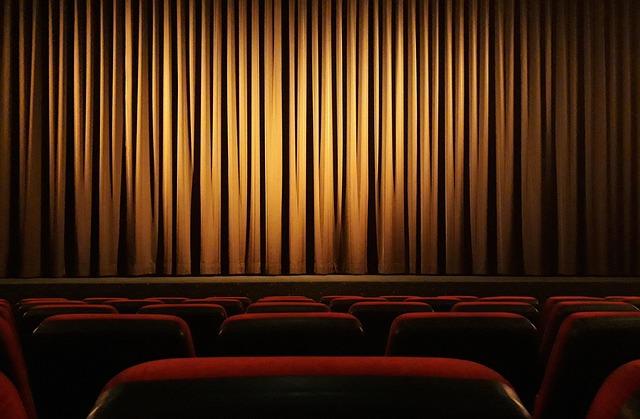Ip Man 4: A Dynamic Fusion of Martial Arts Mastery and Cultural Reflection in 1960s San Francisco
Ip Man 4: Elevating Action with Deep Cultural Insights
Ip Man 4 intensifies its narrative by seamlessly combining electrifying martial arts sequences with a profound examination of cultural identity, heritage, and racial dynamics. Set in the bustling and transformative era of 1960s San Francisco, the film challenges its protagonist‚ÄĒand the audience‚ÄĒto navigate the intricate social fabric beyond the martial arts arena. This sophisticated blend of adrenaline-pumping combat and thoughtful social critique transforms the movie from a conventional action feature into a compelling exploration of honor, respect, and community cohesion.
The film thoughtfully highlights several critical themes:
- The intersection and blending of Eastern philosophies and Western societal norms during a period of rapid American cultural evolution.
- The immigrant experience, focusing on the delicate balance between preserving ancestral traditions and embracing new cultural landscapes.
- Generational tensions within martial arts communities, reflecting broader societal shifts and expectations.
| Key Element | Effect on the Story |
|---|---|
| Martial Arts Choreography | Authentic and visceral, amplifying emotional stakes |
| Cultural Narratives | Stimulates meaningful conversations on race and tradition |
| Character Arcs | Portrays Ip Man’s humanity through moments of vulnerability |
Authenticity in Martial Arts: Beyond the Fight Scenes
In Ip Man 4, the filmmakers demonstrate a profound respect for the martial arts tradition, embedding the fight sequences with genuine cultural significance. The choreography meticulously captures the elegance and precision of Wing Chun, the martial art synonymous with Ip Man. More than just physical combat, the film presents martial arts as a holistic philosophy emphasizing humility, patience, and integrity.
This approach enriches the narrative by showing how these principles influence practitioners’ lives beyond the dojo walls. The story also delves into the challenges faced by Chinese martial artists in 1960s San Francisco, where racial tensions and cultural misunderstandings were prevalent. Martial arts here act as a conduit for cross-cultural respect and understanding, with key moments underscoring that true mastery involves empathy and honor as much as skill.
| Aspect | Details | Importance |
|---|---|---|
| Training Customs | Includes respectful bows, meditation, and warm-up rituals | Fosters discipline and reverence for the art |
| Combat Etiquette | Emphasizes fair play, with handshakes before and after fights | Highlights the values of honor and sportsmanship |
| Intercultural Engagement | Shows respectful interactions between Eastern and Western fighters | Positions martial arts as a form of cultural diplomacy |
- Realistic fight portrayal: The action avoids exaggerated moves, focusing on believable and effective techniques.
- Philosophical depth: Martial arts are depicted as a way of life, not merely a combat style.
- Historical grounding: The film highlights how respect and perseverance preserved martial traditions amid societal challenges.
Depicting the Socio-Political Landscape of 1960s San Francisco
Ip Man 4 vividly captures the complex social and political environment of 1960s San Francisco, where Chinatown was both a cultural refuge and a site of racial strife. The film personalizes these broader issues through intimate stories of Chinese immigrants striving for dignity and equality in the face of systemic bias. From discriminatory law enforcement practices to community fragmentation, the narrative illustrates how adversity fostered unity and strengthened cultural identity.
Key aspects of the era’s community dynamics are thoughtfully portrayed, including:
- Generational conflicts: Younger Chinese Americans’ desire for assimilation often clashed with elders’ commitment to tradition.
- Economic challenges: Small businesses struggled to survive amid widespread prejudice and limited resources.
- Emerging activism: Grassroots movements began to challenge racial injustices and advocate for civil rights.
| Community Element | Historical Reality | Film Interpretation |
|---|---|---|
| Police Relations | Frequent racial profiling and harassment | Depicted as a unifying force inspiring resistance |
| Youth Identity | Struggles between cultural assimilation and heritage preservation | Explored through generational conflicts and eventual reconciliation |
| Community Cohesion | Often fragmented but resilient | Shown as a critical factor in combating injustice |
Why Ip Man 4 Resonates with Martial Arts Fans and History Enthusiasts
Ip Man 4 masterfully combines exhilarating martial arts performances with a thoughtful depiction of the cultural and racial tensions of the 1960s. Martial arts aficionados will appreciate the film’s dedication to authentic Wing Chun techniques, brought to life by director Wilson Yip and star Donnie Yen. Each fight scene transcends mere spectacle, embodying the philosophy and resilience at the heart of the discipline.
Meanwhile, history enthusiasts will find value in the film’s nuanced portrayal of San Francisco’s Chinatown during a pivotal era of civil rights activism and anti-Asian discrimination. The story sheds light on:
- Cross-cultural tensions and solidarity within immigrant communities.
- The ongoing struggle between preserving tradition and embracing modernization.
- Ip Man’s role as a cultural ambassador bridging Eastern and Western worlds.
| Feature | Significance |
|---|---|
| Martial Arts Authenticity | Faithfully represents genuine Wing Chun techniques |
| Historical Context | Accurately portrays racial tensions in 1960s America |
| Character Depth | Balances strength with emotional vulnerability |
Final Thoughts
Ultimately, Ip Man 4 delivers a compelling synthesis of intense martial arts action and insightful cultural commentary, set against the rich and complex backdrop of San Francisco’s Chinatown. The film honors the enduring legacy of its iconic protagonist while thoughtfully engaging with themes of identity, respect, and perseverance. As the concluding chapter of this celebrated series, it asserts its place as a landmark in contemporary martial arts cinema, delivering justice and dignity both inside the ring and beyond.




